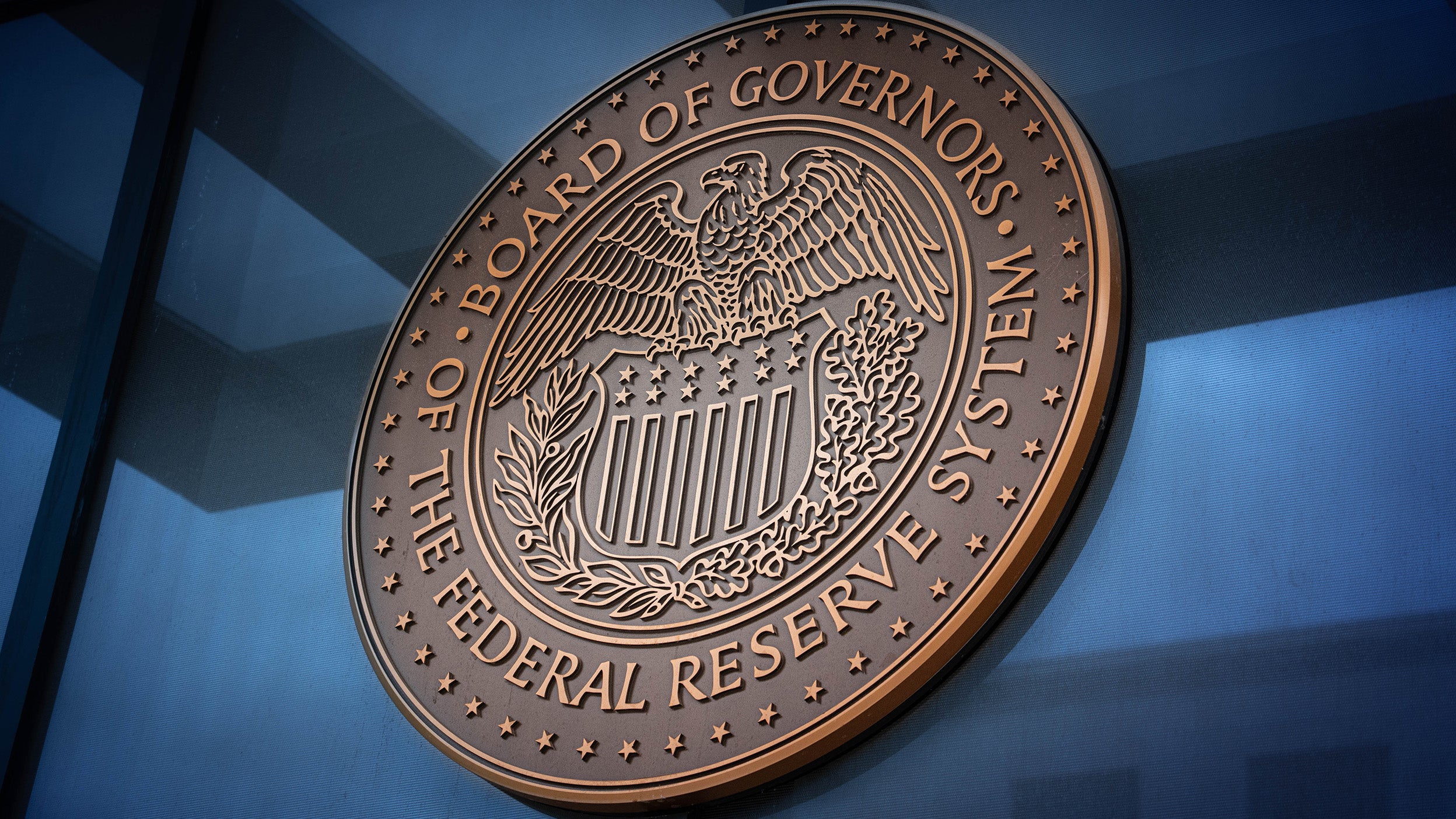
Markets and Economy Above the Noise: Rethinking 2025 narratives
In 2025, clear storylines on the Federal Reserve, AI stocks, and rates captivated us. But the numbers don’t always match the narratives.

While stocks took a small step down the proverbial wall of worry last week, we expect markets to resume their climb.
While a US government shutdown could introduce volatility, history suggests the market impact would be limited.
Bond yields in the UK and France rose last week as both face increasing political and fiscal challenges.
From a potential US government shutdown, to the return of tariff talks, to political and fiscal challenges in Europe — there's a lot for markets to process at the moment. And we see no reason why things will get any easier over the coming weeks and months. But difficult doesn’t mean bad. While stocks took a small step down the proverbial “wall of worry” last week, we expect markets to resume their climb. But as always, investors should carefully pick their handholds to help navigate the best route.
Stock markets struggled a little last week, with the S&P 500 Index posting its worst weekly return in nearly two months.1 In that time, investors have had to contend with continued geopolitical uncertainty, domestic growth worries, and slowing labor market data. But markets have been supported by resilient earnings,2 stable inflation expectations,3 and the prospect of easier monetary policy.4
So why step back now? Some point to slowing growth, citing softer US payroll numbers.5 Others argue growth is too strong, which would mean fewer rate cuts. Last week saw an upward revision to the second-quarter US gross domestic product (GDP) from continued consumer resilience.6 Seasonal factors and concerns over a potential US government shutdown have also been mentioned. While a shutdown could introduce volatility, history suggests it has had a limited market impact. There have been 21 US government shutdowns since 1976, lasting just eight days on average, and the S&P 500 Index averaged a modest 0.1% return during those periods.7 Overall, we’d say the reason for the pullback is a combination of all of the above
The recent declines, in our view, are a potential near-term consolidation following a robust advance. Nothing more ominous than that. The US economy likely remains in the middle stage of the cycle, with few signs of recession still. We continue to believe that rate cuts and a possible reacceleration in economic activity will support stock market gains as we move toward year-end and into 2026. Pullbacks are healthy and normal.
If Congress doesn’t pass a spending bill or a continuing resolution by midnight on September 30, parts of the government will start to shut down. This appears likely due to partisan gridlock over federal spending. Should a shutdown happen, essential services such as air traffic control, Social Security, Medicare, and military operations will continue. Non-essential workers may be furloughed, and agencies like NASA and the National Park Service will close.
The economic impact is likely to be modest. Only around 3% of government spending is non-essential,8 and federal employment is at a record low relative to the total workforce.9 Still, nearly 3 million federal workers may be affected, with essential workers receiving IOUs until funding resumes.10 Some limited market volatility is to be expected, but history suggests that government shutdowns tend to pass without significant incidents to markets.11
Tariffs returned to the headlines as President Trump announced a new round of sectoral tariffs. These include a 100% tariff on branded pharmaceutical products, 50% on kitchen cabinets (oddly specific in our view), and 30% on upholstered furniture.
Global economic data released last week painted a mixed picture. In the US, second-quarter GDP was revised significantly higher,12 driven in part by continued strength from the consumer. While the labor market is showing signs of cooling, jobless claims remained low,13 suggesting that businesses are still reluctant to let go of workers. Additionally, the US Services Purchasing Managers’ Index (PMI) stayed in expansionary territory, reinforcing the resilience of the domestic economy.14
Outside the US, the data was less encouraging. Eurozone and UK Purchasing Managers Indexes pointed to contraction in manufacturing activity,15 while China’s factory output fell to a 12-month low, underscoring the economic strain in the region.16
Many Fed members spoke last week. The message was mixed across the group, but consistent relative to each individual’s previous comments. Steven Miran argued his very dovish case, saying he would rather be “proactive” than wait for a “giant catastrophe.”17 The language from others was less hyperbolic, with Austan Goolsbee saying he was “a little uneasy with too much front-loading”18 and Jeffery Schmid saying data “still remains largely in balance.”19
Bond yields in the UK and France rose last week as both face increasing political and fiscal challenges. The UK government is increasingly mired in infighting as well as external challenges to Prime Minister Keir Starmer. That’s limiting its ability to pass the policy needed to regain the bond market’s confidence in the UK fiscal picture. Talks of a UK crisis are overblown, in our view, but challenges to the bond market will likely remain until at least the end of November, when the budget is due. In France, Prime Minister Sébastien Lecornu is still struggling to pass a budget that cuts the deficit, as various political groups wrestle in the National Assembly.
Date |
Region |
Event |
Why it matters |
|---|---|---|---|
Sept. 30 |
US |
S&P/Case-Shiller Home Price Index (July) |
Key measure of home price trends; reflects consumer wealth and housing inflation |
|
US |
FHFA House Price Index (July) |
Gauge of housing market strength; used in mortgage market analysis |
|
US |
Consumer Confidence Index (Sept.) |
Indicates consumer sentiment and future spending intentions. |
|
US |
Job Openings and Labor Turnover Survey (JOLTS) (Aug.) |
Offers insight into labor market tightness and hiring trends |
|
US |
Durable goods orders (Aug.) |
Key indicator of business investment and manufacturing demand |
Oct. 1 |
US |
ADP Employment Change (Sept.) |
Private payroll data; a key indicator of US labor market trends and a leading indicator for the Bureau of Labor Statistics report |
|
US |
ISM Manufacturing Purchasing Managers’ Index (PMI) (Sept.) |
Key gauge of US manufacturing health and business conditions |
|
US |
Construction spending |
Indicates investment trends in real estate and infrastructure |
Oct. 2 |
US |
Factory orders |
Measures demand for manufactured goods — leading indicator of production |
Oct. 3 |
US |
Non-farm payrolls (Sept.) |
Most-watched labor market report; key for Fed policy decisions |
|
US |
Employment rate (Sept.) |
Core measure of labor market slack. |
|
US |
Average hourly earnings |
Tracks wage inflation, a key input for monetary policy |
|
US |
ISM Services Purchasing Managers’ Index (PMI) |
Measures service sector activity, which comprises the bulk of US GDP |
|
US |
PMI Composite and Services (Sept. Final) |
Final read on business |

In 2025, clear storylines on the Federal Reserve, AI stocks, and rates captivated us. But the numbers don’t always match the narratives.

For investors looking to diversify their mega-cap technology exposure, improving growth and falling interest rates may be good reasons.

A rate cut, which markets are pricing in despite Fed member differences, and an expected improving economy in 2026, could support stocks.
Important information
NA4854750
Image: John Fedele / Getty
All investing involves risk, including the risk of loss.
Past performance does not guarantee future results.
Investments cannot be made directly in an index.
This does not constitute a recommendation of any investment strategy or product for a particular investor. Investors should consult a financial professional before making any investment decisions.
Investments in companies located or operating in Greater China are subject to the following risks: nationalization, expropriation, or confiscation of property, difficulty in obtaining and/or enforcing judgments, alteration or discontinuation of economic reforms, military conflicts, and China’s dependency on the economies of other Asian countries, many of which are developing countries.
A continuing resolution is a temporary funding measure that Congress can use to continue pre-existing appropriations at the same levels as the previous fiscal year (or with minor modifications) for a set amount of time.
Dovish refers to an economic outlook that generally supports low interest rates as a means of encouraging growth within the economy.
Monetary easing refers to the lowering of interest rates and deposit ratios by central banks.
Gross domestic product (GDP) is a broad indicator of a region’s economic activity, measuring the monetary value of all the finished goods and services produced in that region over a specified time period.
Inflation is the rate at which the general price level for goods and services is increasing.
Breakeven inflation is the difference in yield between a nominal Treasury security and a Treasury Inflation-Protected Security of the same maturity.
The Job Openings and Labor Turnover Survey (JOLTS) from the US Bureau of Labor Statistics produces data on job openings, hires, and separations.
Purchasing Managers’ Indexes (PMI) are based on monthly surveys of companies worldwide and gauge business conditions within the manufacturing and services sectors.
The S&P 500® Index is an unmanaged index considered representative of the US stock market.
In general, stock values fluctuate, sometimes widely, in response to activities specific to the company as well as general market, economic, and political conditions.
The opinions referenced above are those of the author as of Sept. 26, 2025. These comments should not be construed as recommendations, but as an illustration of broader themes. Forward-looking statements are not guarantees of future results. They involve risks, uncertainties, and assumptions; there can be no assurance that actual results will not differ materially from expectations.
This link takes you to a site not affiliated with Invesco. The site is for informational purposes only. Invesco does not guarantee nor take any responsibility for any of the content.